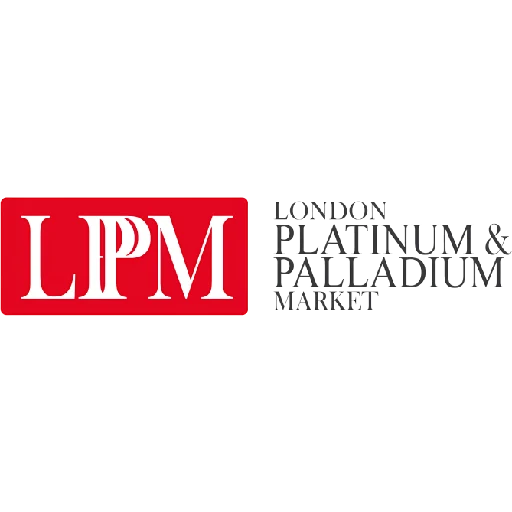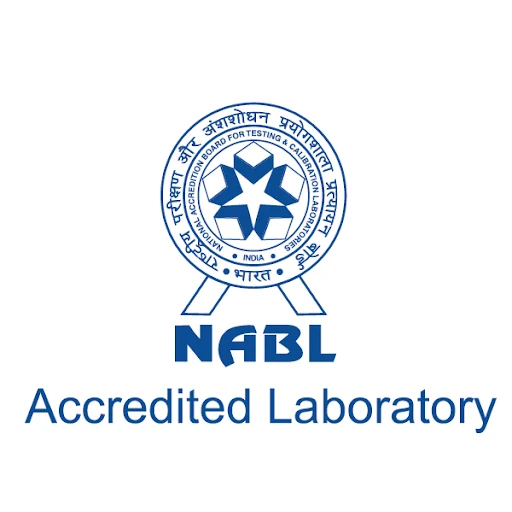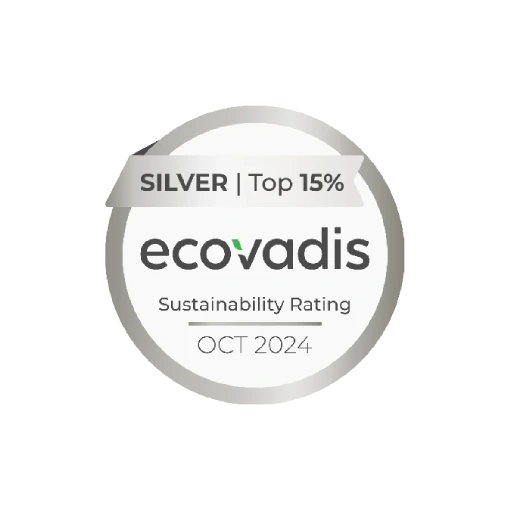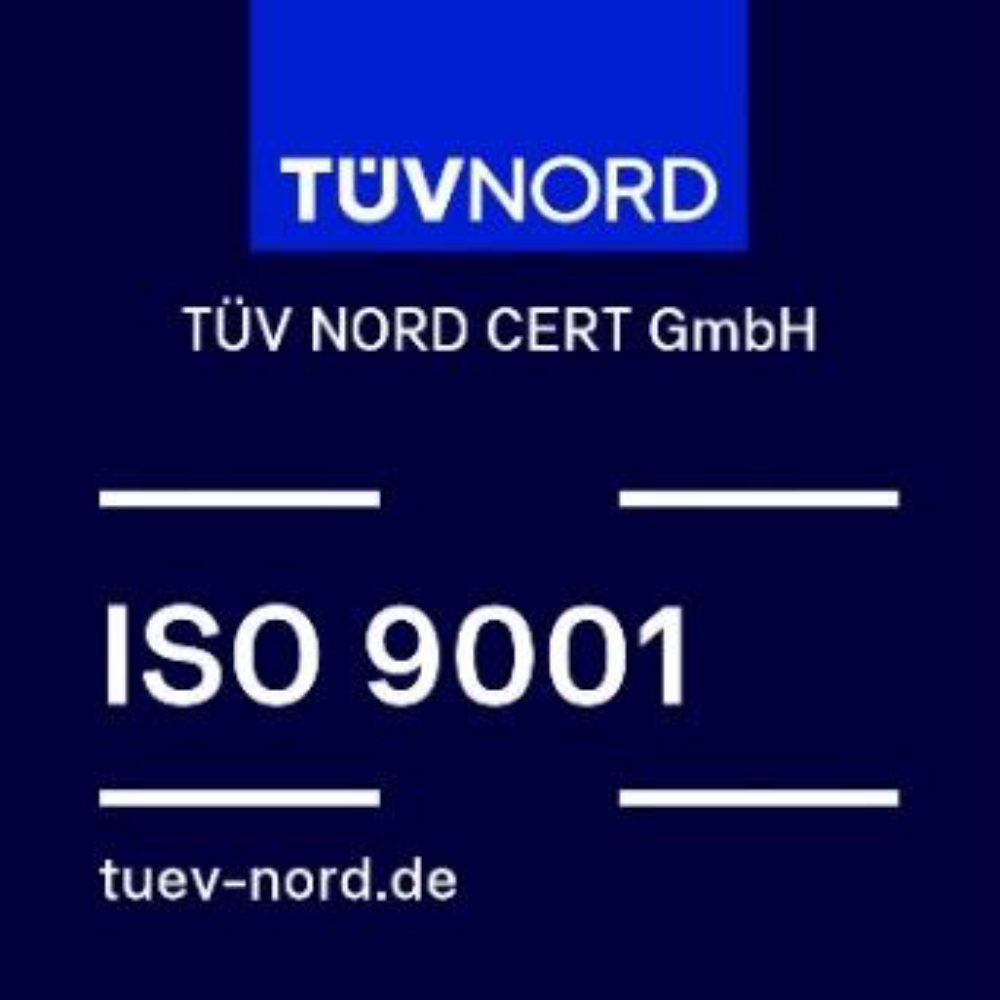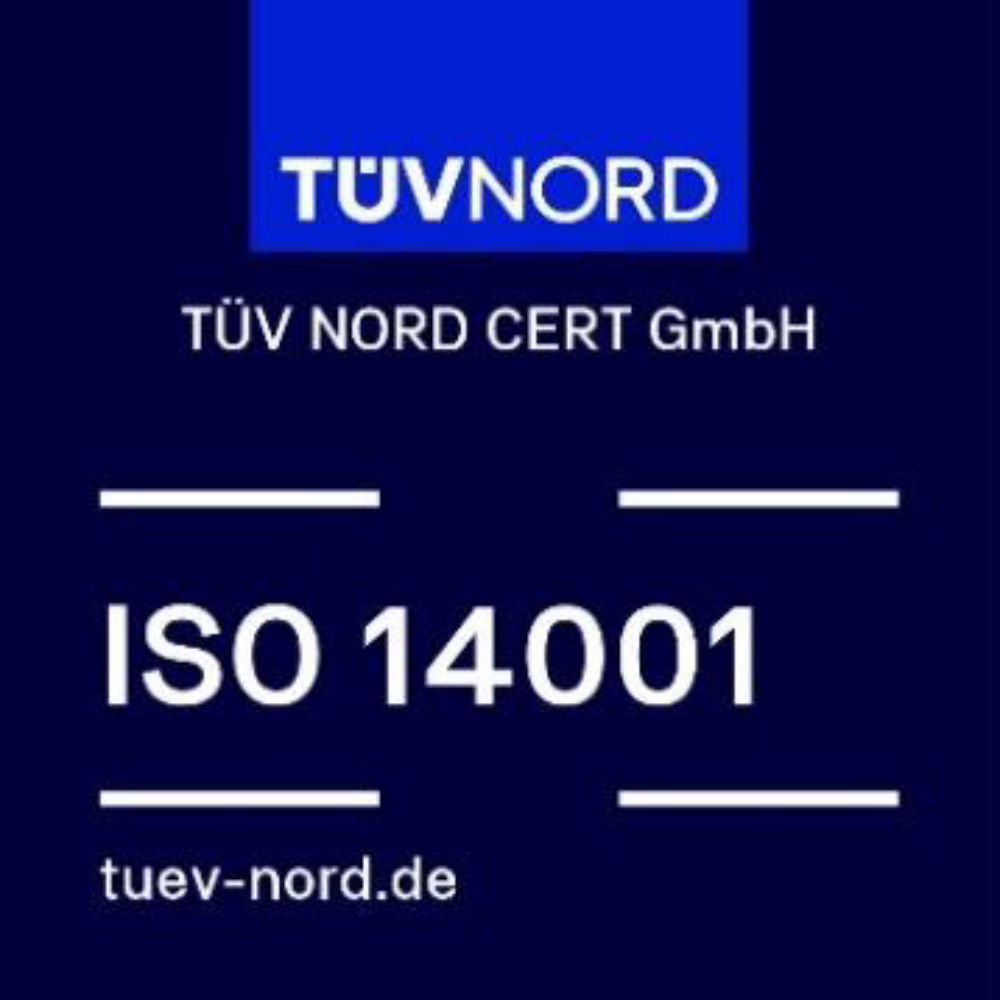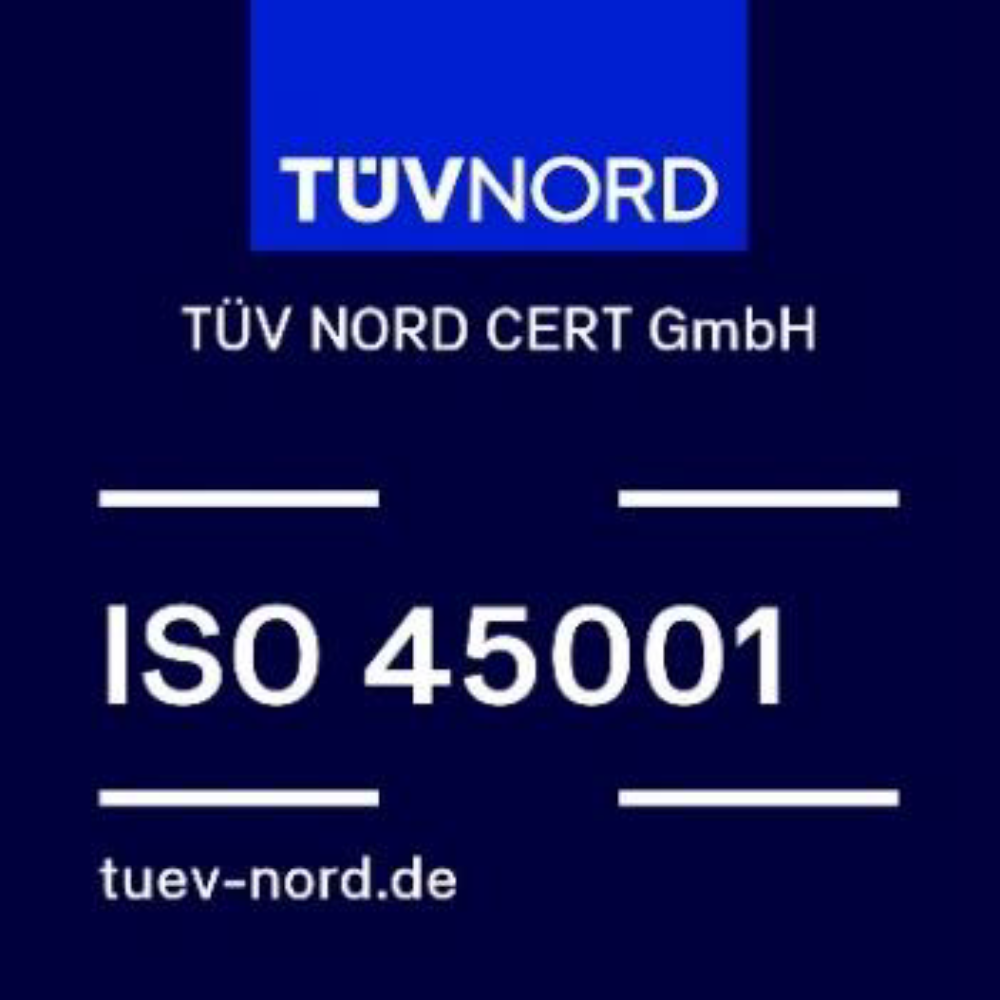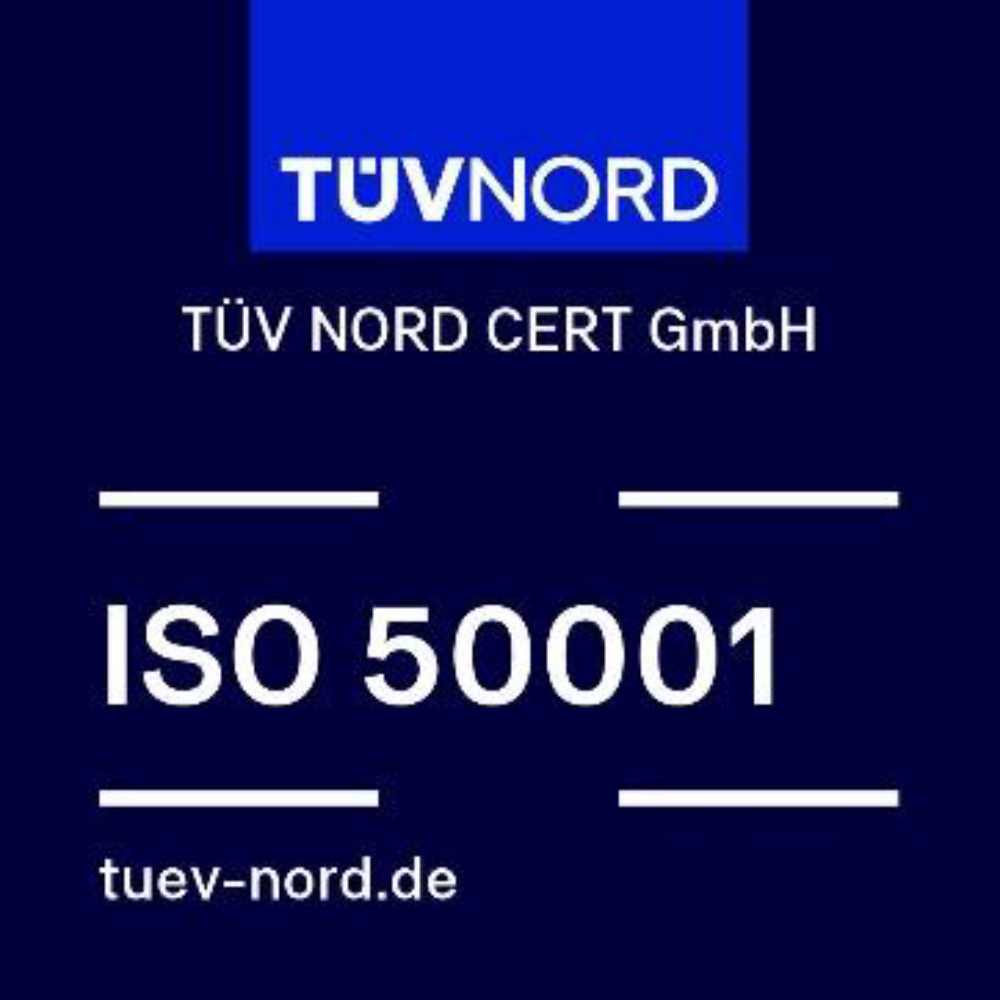Catalysts &
Chemicals
We design and supply premium precious metal–based catalysts tailored for pharmaceutical, agrochemical, and fine chemical processes . With on-site pilot testing, monthly inventory reviews, and closed-loop metal recovery, we enable customers to speed scale-up, reduce process steps, and secure supply predictability. Our integrated approach drives operational efficiency while minimizing environmental impact and supporting regulatory compliance.
Catalysts &
Chemicals
We develop precious metal-based catalysts and chemical solutions that drive efficiency, selectivity, and sustainability across pharmaceutical, agrochemical, and fine chemical manufacturing. Our offerings enable cleaner reactions, reduced process steps, and closed-loop metal recovery—advancing not just process performance but also environmental responsibility and long-term value.
Industries We Serve
-
Agrochemicals Hover Content
-
Flavours & Fragrance Hover Content
-
Fine & Bulk Chemicals Hover Content
-
Pharmaceuticals API & its Intermediates Hover Content
- Pharmaceuticals API & its Intermediates
- Hover content
- Agrochemicals
- Hover content
- Flavours & Fragrance
- Hover content
- Fine & Bulk Chemicals
- Hover content
Homogeneous Catalyst
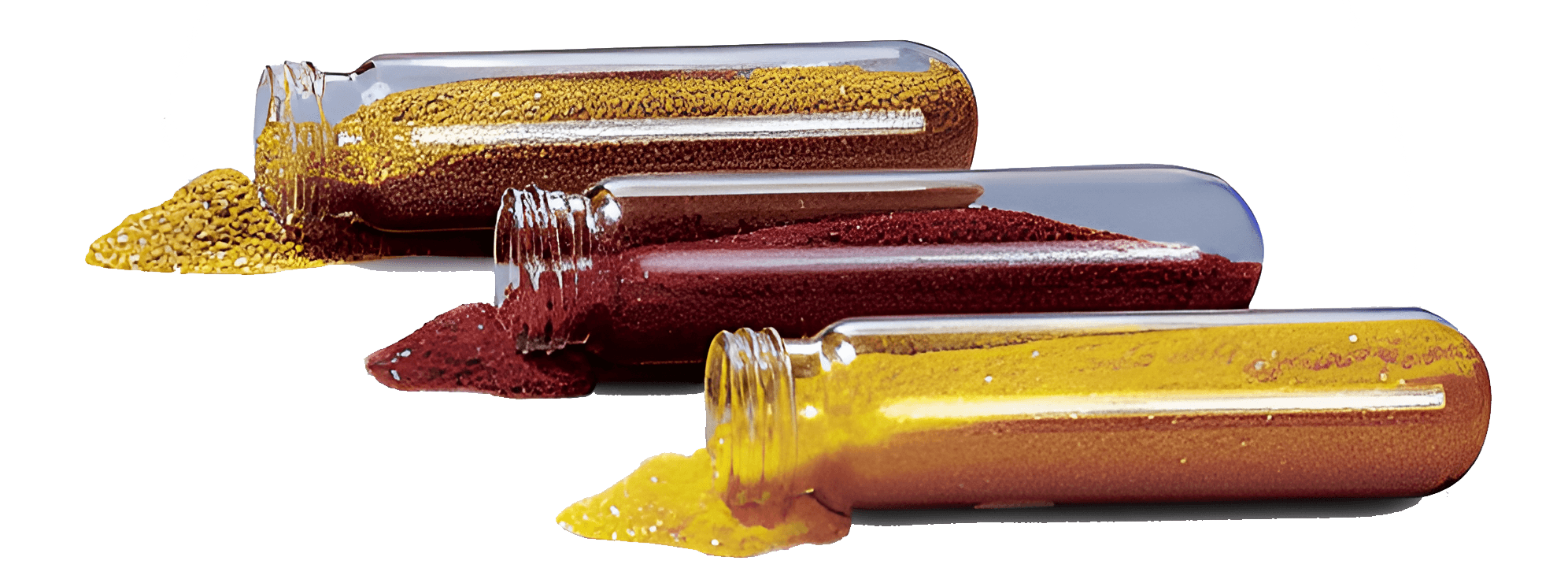
Our homogeneous catalysts are soluble metal complexes that offer exceptional selectivity and activity in liquid-phase reactions. Ideal for fine chemical synthesis, they enable controlled transformations and are often customized with specific ligand systems to suit individual process requirements.
Platinum
| Compound | Name | CAS | F.W. | Properties | % P.M | Solubility |
|---|---|---|---|---|---|---|
| (NH₄)₂PtCl₆ | Ammonium hexachloroplatinate(IV) ■ | 16919-58-7 | 443.89 | 43.95 | Slightly soluble in water | |
| (NH₄)₂PtCl₄ | Ammonium tetrachloroplatinate (II) ■ | 13820-41-2 | 372.98 | 52.29 | Water | |
| PtCl₂(NH₃)₂ | cis-Diamminedichloroplatinum (II) | 15663-27-1 | 300.06 | 65 | In DMF | |
| PtCl₄(NH₃)₂ | trans-Diamminetetrachloroplatinum (IV) | 16893-06-04 | 370.96 | 52.6 | ||
| Pt[(C₂H₅)₂S]₂Cl₂ | cis-Dichlorobis (diethylsulfied) platinum (II) | 15442-57-6 | 446.37 | 43.7 | Acetone, alcohol | |
| PtCl₂(H₂NCH₂NH₂) | Dichloro(ethylenediammine) platinum (II) ■ | 14096-51-6 | 326.1 | 59.8 | ||
| H₂PtCl₆·6H₂O | Dihydrogen hexachloroplatinate (IV) ■■ | 26023-84-7 | 409.82■ | Light sensitive, Hygroscopic, Anhydrous | Water, acetone, alcohol | |
| (CH₃)₃PtI | Iodotrimethylplatinum (IV) | 14364-93-3 | 367.09 | 53.1 | ||
| Pt | Platinum black | 7440-06-04 | 195.08 | 98 | ||
| PtCl₂ | Platinum chloride (II) | 10025-65-7 | 266 | 73 | HCl, NH₄OH | |
| PtCl₄ | Platinum chloride (IV) ■ | 13454-96-1 | 336.9 | 57.9 | H₂O, HCl, acetone | |
| PtO₂·xH₂O | Platinum (IV) oxide | 1314-15-4 | 227.09 ■ | 80–84 | ||
| Pt | Platinum sponge | 7440-06-04 | 195.08 | 99.95+ | Aqua regia | |
| K₂PtCl₄ | Potassium tetrachloroplatinate ■ | 10025-99-7 | 415.11 | 46.99 | Water | |
| Na₂PtCl₆·6H₂O | Sodium hexachloroplatinate (IV) ■ | 19583-77-8 | 453.79 | 34 | Water, acetone, alcohol | |
| Pt(NH₃)₄Cl₂·H₂O | Tetraammineplatinate (II) chloride | 1393-32-9 | 334.11 ■ | 55.4 | Water |
Palladium
| Compound | Name | CAS | F.W. | % P.M | Solubility |
|---|---|---|---|---|---|
| Pd(NH₃)₂Cl₂ | Trans-Dichlorodiammine palladium (II) chloride | 14323-43-4 | 211.37 | 50.3 | NH₄OH |
| (NH₃)₂Pd(NO₂)₂ | Diamminepalladium (II) nitrite | 14852-83-6 | 232.47 | 46 | |
| Pd | Palladium black | 7440-05-03 | 106.4 | 98 | |
| Pd | Palladium sponge | 7440-05-03 | 106.4 | 99.95+ | |
| PdCl₂ | Palladium (II) chloride ■ | 7647-10-1 | 177.31 | 60 | Dil. HCl |
| K₂PdCl₆ | Potassium hexachloropalladate (IV) ■ | 16919-73-6 | 397.32 | 26.8 | Slightly soluble in HCl |
| Pd(NO₃)₂·xH₂O | Palladium (II) nitrate | 10102-05-03 | 230.43 ■ | 46.18 | DDL, HNO₃ |
| PdO | Palladium (II) oxide | 1314-08-05 | 122.4 | 87 | 48% HBr |
| K₂PdCl₄ | Potassium tetrachloropalladate (II) ■ | 10025-98-6 | 326.42 | 32.59 | Water |
| K₂[Pd(CN)₄]·3H₂O | Potassium tetracyanopalladate (II) | 14516-46-2 | 288.68 ■ | 31.1 | |
| Na₂PdCl₄·xH₂O | Sodium tetrachloropalladate (II) | 18284-36-1 | 294.2 ■ | 36.17 | Water, C₂H₅OH |
| Pd(NH₃)₄Cl₂·H₂O | Tetraamminepalladium (II) chloride | 13933-31-8 | 245.43 ■ | 40.2 | |
| [Pd(NH₃)₄][PdCl₄] | Tetraamminepalladium (II) tetrachloropalladate (II) | 13820-44-5 | 422.8 | 25.17 |
Rhodium
| Compound | Name | CAS | F.W. | % P.M | Solubility |
|---|---|---|---|---|---|
| (NH₄)₃RhCl₆·xH₂O | Ammonium hexachlororhodate (III) ■ | 15336-18-2 | 369.74 ■ | 27.83 | Water |
| Rh₆(CO)₁₆ | Hexadecacarbonyl hexarhodium | 28407-51-4 | 1065.61 | 58 | Sparingly soluble in CHCl₃, CCl₄, CH₂Cl₂ |
| RhH[P(C₆H₅)₃]₄ | Hydridotetrakis (triphenylphosphine) rhodium (I) ■ | 18284-36-1 | 1153.09 | 8.9 | Toluene, chloroform |
| K₃RhCl₆ | Potassium hexachlororhodate (III) ■ | 13845-07-03 | 432.93 | 23.77 | |
| [Rh(CO₂CH₃)₂]₂ | Rhodium (II) acetate, dimer | 15956-28-2 | 441.99 | 46.57 | Water |
| Rh | Rhodium black | 7440-16-6 | 102.9 | 98 | |
| RhCl₃·xH₂O | Rhodium (III) chloride ■ | 20765-98-4 | 209.26 ■ | 39 | Water, alcohol, HCl |
| Rh | 7440-16-6 | 102.9 | 99.9+ | ||
| Rh₂(SO₄)₃ | Rhodium (III) sulphate 10% solution | 10489-46-0 | 494 | 41.66 | |
| [Rh(C₇H₁₅COO)₂]₂ | Rhodium octanoate dimer | 73482-96-9 | 778.62 | 26.46 | Hot alcohol, CH₂Cl₂, toluene, acetic acid |
Ruthenium
| Compound | Name | CAS | F.W. | % P.M | Solubility |
|---|---|---|---|---|---|
| K₂RuCl₅·XH₂O | Potassium pentachlororuthenate (III) | 14404-33-2 | 356.54 ■ | 28.3 | |
| RuCl₃·xH₂O | Ruthenium (III) chloride ■ | 14898-67-9 | 207.43 ■ | 38–43 | Water, alcohol |
| Ru | Ruthenium black | 7440-18-8 | 101.07 | ||
| Ru | Ruthenium powder | 7440-18-8 | 101.07 | 99.9 |
Iridium
| Compound | Name | CAS | F.W. | % P.M | Solubility |
|---|---|---|---|---|---|
| (NH₄)₃IrCl₆·xH₂O | Ammonium hexachloroiridate (III) | 15752-05-03 | 459.06 | 41.9 | |
| Ir | Iridium black | 7439-88-5 | 192.22 | ||
| IrCl₃·xH₂O | Iridium chloride hydrate ■ | 14996-61-3 | 298.58 | 64.4 | Water, alcohol |
| IrO₂ | Iridium (IV) oxide | 12030-49-8 | 224.2 | 85.7 | |
| Ir | Iridium sponge | 7439-88-5 | 192.22 | 99.9 | |
| Na₃IrCl₆·xH₂O | Sodium hexachloroiridate (III) ■ | 123334-23-6 | 473.89 | 40.6 | |
| K₂IrCl₆ | Potassium hexachloroiridate (IV) ■ | 16920-56-2 | 483.12 | 39.8 |
Gold
| Compound | Name | CAS | F.W. | % P.M | Solubility |
|---|---|---|---|---|---|
| (NH₄)AuCl₄·xH₂O | Ammonium tetrachloroaurate (III) | 13874-04-09 | 356.82 | 55.2 | Water, alcohol |
| Au | Gold powder | 7440-57-5 | 196.97 | 99.95+ | |
| AuCl | Gold (I) chloride | 10294-29-8 | 232.42 | 84.75 | |
| AuCN | Gold (I) cyanide | 506-65-0 | 222.98 | 88.33 | |
| HAuCl₄·xH₂O | Hydrogen tetrachloroaurate (III) ■ | 27988-77-8 | 339.79 | 50 | HNO₃ |
| NaAuCl₄·2H₂O | Sodium tetrachloroaurate (III) | 13874-02-07 | 361.77 ■ | 49.5 | Water, alcohol, ether |
| KAuCl₄ | Potassium tetrachloroaurate (III) ■ | 13682-61-6 | 377.88 | 52.1 | Water |
Silver
| Compound | Name | CAS | F.W. | % P.M | Solubility |
|---|---|---|---|---|---|
| AgBr | Silver bromide ■ | 7785-23-1 | 187.78 | 57.44 | Partially soluble in NH₃ |
| AgCl | Silver (I) chloride ■ | 7783-90-6 | 143.32 | 75.26 | NH₃, alkali cyanide |
| AgF | Silver (I) fluoride ■ | 7775-41-9 | 126.87 | 85 | HF, NH₃, CH₃CN |
| AgI | Silver (I) iodide ■ | 7783-96-2 | 234.77 | 45.95 | Alkali cyanides & iodides |
| AgNO₃ | Silver (I) nitrate ■ | 7761-88-8 | 169.87 | 63.5 | Water, alcohol |
| Ag₂O | Silver (I) oxide | 20667-12-3 | 231.74 | 93 | Dil. HNO₃, NH₃ |
| Ag | Silver powder | 7440-22-4 | 107.86 | 99.99 | Dil. HNO₃ |
| AgCOOCH₃ | Silver acetate | 563-63-3 | 168.9 | 64.63 | Dilute nitric acid |
| AgCOOCH(OH)CH₃ | Silver lactate | 128-00-7 | 197.7 | 50-55 | Water |
| Ag₂CO₃ | Silver carbonate | 534-16-7 | 275.75 | 78.23 | All acids |
Heterogenous Catalyst

Heterogeneous catalysts enable efficient industrial processes with high yields, selectivity, recyclability, and minimal by-products. They are used in hydrogenation, dehydrogenation, and oxidation, produced by dispersing platinum group metals on high-surface-area supports. Performance depends on support properties and metal characteristics, influencing dispersion, diffusion, recovery, and selectivity. Tailored catalysts allow faster scale-up, higher metal return, shorter lead times, and strong technical support.
Platinum
| SR. No. | Grade | Metal Content | Support | Application |
|---|---|---|---|---|
| 1 | RD-236 | 3%, 5% | Carbon | C-C bonds hydrogenation, Double bonds, Triple bonds, Reductive alkylation/Amination, Nitro / Nitroso group hydrogenation, Halonitroaromatics hydrogenation |
| 2 | RD-316 | 5% | Carbon | C-C bonds hydrogenation, Double bonds, Triple bonds, Reductive alkylation/Amination, Nitro / Nitroso group hydrogenation, Halonitroaromatics hydrogenation |
| 3 | RD-381 | 3% | Carbon | C-C bonds hydrogenation, Double bonds, Triple bonds, Nitro / Nitroso group hydrogenation, Halonitroaromatics hydrogenation |
| 4 | RD-451 | 1% | Carbon | C-C bonds hydrogenation, Double bonds, Triple bonds, Reductive alkylation / Amination, Nitro / Nitroso group hydrogenation, Halonitroaromatics hydrogenation |
| 5 | RD-537 | 5% | Carbon | C-C bonds hydrogenation, Double bonds, Triple bonds, Nitro / Nitroso group hydrogenation, Halonitroaromatics hydrogenation |
| 6 | RD-709 | 3%, 5% | Carbon | C-C bonds hydrogenation, Double bonds, Triple bonds, Reductive alkylation / Amination, Nitro / Nitroso group hydrogenation |
| 7 | RD-714 | 5% | Carbon | C-C bonds hydrogenation, Double bonds, Triple bonds, Reductive alkylation / Amination, Nitro / Nitroso group hydrogenation |
| 8 | RD-741 | 3% | Carbon | C-C bonds hydrogenation, Double bonds, Triple bonds, Reductive alkylation / Amination, Nitro / Nitroso group hydrogenation |
| 9 | RD-4112 | 5% | Carbon | Nitro reduction & Reductive amination |
| 10 | RD-4086 | 1.50% | Carbon | Nitro to hydroxyl to amine |
Palladium
| SR. No. | Grade | Metal Content | Support | Application |
|---|---|---|---|---|
| 1 | RD-92 | 5%, 10% | Carbon | C-C bonds hydrogenation Double bonds, Triple bonds C-N bonds hydrogenation Nitriles,Imines,Hydrazones,Oximes C=O bond hydrogenation Aromatic aldehydes,Aromatic Ketones Nitro / Nitroso group hydrogenation Debenzylation / Hydrogenolysis O-Debenzylation, N-Debenzylation, Cbz-(Z)Deprtection Hetroaromatic hydrogenation |
| 2 | RD-124 | 5%, 10% | Carbon | C-C bonds hydrogenation Double bonds, Triple bonds C-N bonds hydrogenation Nitriles,Imines,Hydrazones,Oximes C=O bond hydrogenation Aromatic aldehydes,Aromatic Ketones Nitro / Nitroso group hydrogenation Debenzylation / Hydrogenolysis O-Debenzylation, N-Debenzylation, Cbz-(Z)Deprtection |
| 3 | RD-162 | 5%, 10% | Carbon | C-C bonds hydrogenation Double bonds, Triple bonds C-N bonds hydrogenation Nitriles,Imines,Hydrazones,Oximes C=O bond hydrogenation Aromatic aldehydes,Aromatic Ketones Nitro / Nitroso group hydrogenation Debenzylation/Hydrogenolysis O-Debenzylation,N-Debenzylation, Cbz-(Z)Deprotection |
| 4 | RD-169 | 5%, 10% | Carbon | C-C bonds hydrogenation Double bonds, Triple bonds C-N bonds hydrogenation Nitriles,Imines,Hydrazones,Oximes C=O bond hydrogenation Aromatic aldehydes,Aromatic ketones Nitro / Nitroso group hydrogenation Debenzylation / Hydrogenolysis O-Debenzylation, N-Debenzylation, Cbz-(Z)Deprtection Hetroaromatic hydrogenation Dehydrogenation |
| 5 | RD-172 | 5%, 10% | Carbon | C-C bonds hydrogenation Double bonds, Triple bonds C-N bonds hydrogenation Nitriles,Imines,Hydrazones,Oximes C=O bond hydrogenation Aromatic aldehydes,Aromatic Ketones Nitro / Nitroso group hydrogenation Debenzylation / Hydrogenolysis O-Debenzylation, N-Debenzylation, Cbz-(Z)Deprtection Hetroaromatic hydrogenation Dehydrogenation |
| 6 | RD-189 | 5%, 10% | Carbon | C-C bonds hydrogenation Double bonds, Triple bonds C-N bonds hydrogenation Nitriles,Imines,Hydrazones,Oximes C=O bond hydrogenation Aromatic aldehydes,Aromatic Ketones Nitro / Nitroso group hydrogenation Debenzylation / Hydrogenolysis O-Debenzylation, N-Debenzylation, Cbz-(Z)Deprtection Hetroaromatic hydrogenation Dehydrogenation Dehalogenation |
| 7 | RD-203 | 5%, 10% | Carbon | C-C bonds hydrogenation Double bonds, Triple bonds C-N bonds hydrogenation Nitriles,Imines,Hydrazones,Oximes C=O bond hydrogenation Aromatic aldehydes,Aromatic Ketones Nitro / Nitroso group hydrogenation Debenzylation / Hydrogenolysis O-Debenzylation, N-Debenzylation, Cbz-(Z)Deprtection |
| 8 | RD-206 | 5%, 10% | Carbon | C-C bonds hydrogenation Double bonds, Triple bonds C-N bonds hydrogenation Nitriles,Imines,Hydrazones,Oximes C=O bond hydrogenation Aromatic aldehydes,Aromatic Ketones Nitro / Nitroso group hydrogenation Debenzylation / Hydrogenolysis O-Debenzylation, N-Debenzylation, Cbz-(Z)Deprtection |
| 9 | RD-213 | 5%, 10% | Carbon | C-C bonds hydrogenation Double bonds, Triple bonds C-N bonds hydrogenation Nitriles,Imines,Hydrazones,Oximes C=O bond hydrogenation Aromatic aldehydes,Aromatic Ketones Nitro / Nitroso group hydrogenation Debenzylation / Hydrogenolysis O-Debenzylation, N-Debenzylation, Cbz-(Z)Deprtection |
| 10 | RD-245 | 5%, 10% | Carbon | C-C bonds hydrogenation Double bonds, Triple bonds C-N bonds hydrogenation Nitriles,Imines,Hydrazones,Oximes C=O bond hydrogenation Aromatic aldehydes,Aromatic Ketones Reductive alkylation / Amination Nitro / Nitroso group hydrogenation Debenzylation / Hydrogenolysis O-Debenzylation, N-Debenzylation, Cbz-(Z)Deprtection Hetroaromatic hydrogenation |
| 11 | RD-250 | 5%, 10% | Carbon | C-C bonds hydrogenation Double bonds, Triple bonds C-N bonds hydrogenation Nitriles,Imines,Hydrazones,Oximes C=O bond hydrogenation Aromatic aldehydes,Aromatic Ketones Nitro / Nitroso group hydrogenation Debenzylation / Hydrogenolysis O-Debenzylation, N-Debenzylation, Cbz-(Z)Deprtection |
| 12 | RD-298 | 5%, 10% | Carbon | C-C bonds hydrogenation Double bonds, Triple bonds C-N bonds hydrogenation Nitriles,Imines,Hydrazones,Oximes C=O bond hydrogenation Aromatic aldehydes,Aromatic Ketones Nitro / Nitroso group hydrogenation Debenzylation / Hydrogenolysis O-Debenzylation, N-Debenzylation, Cbz-(Z)Deprtection Dehydrogenation Dehalogenation |
| 13 | RD-299 | 5%, 10% | Carbon | C-C bonds hydrogenation Double bonds, Triple bonds C-N bonds hydrogenation Nitriles,Imines,Hydrazones,Oximes C=O bond hydrogenation Aromatic aldehydes,Aromatic Ketones Nitro / Nitroso group hydrogenation Debenzylation / Hydrogenolysis O-Debenzylation, N-Debenzylation, Cbz-(Z)Deprtection Dehydrogenation Dehalogenation |
| 14 | RD-306 | 5%, 10% | Carbon | C-C bonds hydrogenation Double bonds, Triple bonds C-N bonds hydrogenation Nitriles,Imines,Hydrazones,Oximes C=O bond hydrogenation Aromatic aldehydes,Aromatic Ketones Nitro / Nitroso group hydrogenation Debenzylation / Hydrogenolysis O-Debenzylation, N-Debenzylation, Cbz-(Z)Deprtection |
| 15 | RD-312 | 5%, 10% | Carbon | C-C bonds hydrogenation Double bonds, Triple bonds C-N bonds hydrogenation Nitriles,Imines,Hydrazones,Oximes C=O bond hydrogenation Aromatic aldehydes,Aromatic Ketones Nitro / Nitroso group hydrogenation Debenzylation / Hydrogenolysis O-Debenzylation, N-Debenzylation, Cbz-(Z)Deprtection |
| 16 | RD-343 | 5%, 10% | Carbon | C-C bonds hydrogenation Double bonds, Triple bonds C-N bonds hydrogenation Nitriles,Imines,Hydrazones,Oximes C=O bond hydrogenation Aromatic aldehydes,Aromatic Ketones Reductive alkylation / Amination Nitro / Nitroso group hydrogenation Debenzylation / Hydrogenolysis O-Debenzylation, N-Debenzylation, Cbz-(Z)Deprtection |
| 17 | RD-454 | 5%, 10% | Carbon | C-C bonds hydrogenation Double bonds, Triple bonds C-N bonds hydrogenation Nitriles,Imines,Hydrazones,Oximes C=O bond hydrogenation Aromatic aldehydes,Aromatic Ketones Nitro / Nitroso group hydrogenation Debenzylation / Hydrogenolysis O-Debenzylation, N-Debenzylation, Cbz-(Z)Deprtection |
| 18 | RD-484 | 5%, 10% | Carbon | C-C bonds hydrogenation Double bonds, Triple bonds C-N bonds hydrogenation Nitriles,Imines,Hydrazones,Oximes C=O bond hydrogenation Aromatic aldehydes,Aromatic Ketones Nitro / Nitroso group hydrogenation Debenzylation / Hydrogenolysis O-Debenzylation, N-Debenzylation, Cbz-(Z)Deprtection Dehydrogenation Dehalogenation |
| 19 | RD-501 | 5%, 10% | Carbon | C-C bonds hydrogenation Double bonds, Triple bonds C-N bonds hydrogenation Nitriles,Imines,Hydrazones,Oximes C=O bond hydrogenation Aromatic aldehydes,Aromatic Ketones Nitro / Nitroso group hydrogenation Debenzylation / Hydrogenolysis O-Debenzylation, N-Debenzylation, Cbz-(Z)Deprtection Dehydrogenation Dehalogenation |
| 20 | RD-506 | 5%, 10% | Carbon | C-C bonds hydrogenation Double bonds, Triple bonds C-N bonds hydrogenation Nitriles,Imines,Hydrazones,Oximes C=O bond hydrogenation Aromatic aldehydes,Aromatic Ketones Nitro / Nitroso group hydrogenation Debenzylation / Hydrogenolysis O-Debenzylation, N-Debenzylation, Cbz-(Z)Deprtection |
| 21 | RD-572 | 5%, 10% | Carbon | C-C bonds hydrogenation Double bonds, Triple bonds C-N bonds hydrogenation Nitriles,Imines,Hydrazones,Oximes C=O bond hydrogenation Aromatic aldehydes,Aromatic Ketones Reductive alkylation / Amination Nitro / Nitroso group hydrogenation Debenzylation / Hydrogenolysis O-Debenzylation, N-Debenzylation, Cbz-(Z)Deprtection |
| 22 | RD-609 | 5%, 10% | Carbon | C-C bonds hydrogenation Double bonds, Triple bonds C-N bonds hydrogenation Nitriles,Imines,Hydrazones,Oximes C=O bond hydrogenation Aromatic aldehydes,Aromatic Ketones Nitro / Nitroso group hydrogenation Debenzylation / Hydrogenolysis O-Debenzylation, N-Debenzylation, Cbz-(Z)Deprtection |
| 23 | RD-612 | 5%, 10% | Carbon | C-C bonds hydrogenation Double bonds, Triple bonds C-N bonds hydrogenation Nitriles,Imines,Hydrazones,Oximes C=O bond hydrogenation Aromatic aldehydes,Aromatic Ketones Nitro / Nitroso group hydrogenation Debenzylation / Hydrogenolysis O-Debenzylation, N-Debenzylation, Cbz-(Z)Deprtection Dehalogenation |
| 24 | RD-619 | 5%, 10% | Carbon | C-C bonds hydrogenation Double bonds, Triple bonds C-N bonds hydrogenation Nitriles,Imines,Hydrazones,Oximes C=O bond hydrogenation Aromatic aldehydes,Aromatic Ketones Reductive alkylation / Amination Nitro / Nitroso group hydrogenation Debenzylation / Hydrogenolysis O-Debenzylation, N-Debenzylation, Cbz-(Z)Deprtection Hetroaromatic hydrogenation Dehalogenation |
| 25 | RD-636 | 5%, 10% | Carbon | C-C bonds hydrogenation Double bonds, Triple bonds C-N bonds hydrogenation Nitriles,Imines,Hydrazones,Oximes C=O bond hydrogenation Aromatic aldehydes,Aromatic Ketones Reductive alkylation / Amination Nitro / Nitroso group hydrogenation Debenzylation / Hydrogenolysis O-Debenzylation, N-Debenzylation, Cbz-(Z)Deprtection |
| 26 | RD-672 | 5%, 10% | Carbon | C-C bonds hydrogenation Double bonds, Triple bonds C-N bonds hydrogenation Nitriles,Imines,Hydrazones,Oximes C=O bond hydrogenation Aromatic aldehydes,Aromatic Ketones Reductive alkylation / Amination Nitro / Nitroso group hydrogenation Debenzylation / Hydrogenolysis O-Debenzylation, N-Debenzylation, Cbz-(Z)Deprtection Hetroaromatic hydrogenation |
| 27 | RD-692 | 5%, 10% | Carbon | C-C bonds hydrogenation Double bonds, Triple bonds C-N bonds hydrogenation Nitriles,Imines,Hydrazones,Oximes C=O bond hydrogenation Aromatic aldehydes,Aromatic Ketones Reductive alkylation / Amination Nitro / Nitroso group hydrogenation Debenzylation / Hydrogenolysis O-Debenzylation, N-Debenzylation, Cbz-(Z)Deprtection Hetroaromatic hydrogenation |
| 28 | RD-718 | 5%, 10% | Carbon | C-C bonds hydrogenation Double bonds, Triple bonds C-N bonds hydrogenation Nitriles,Imines,Hydrazones,Oximes C=O bond hydrogenation Aromatic aldehydes,Aromatic Ketones Nitro / Nitroso group hydrogenation Debenzylation / Hydrogenolysis O-Debenzylation, N-Debenzylation, Cbz-(Z)Deprtection |
| 29 | RD-778 | 5%, 10% | Carbon | C-C bonds hydrogenation Double bonds, Triple bonds C-N bonds hydrogenation Nitriles,Imines,Hydrazones,Oximes C=O bond hydrogenation Aromatic aldehydes,Aromatic Ketones Nitro / Nitroso group hydrogenation Debenzylation / Hydrogenolysis O-Debenzylation, N-Debenzylation, Cbz-(Z)Deprtection |
| 30 | RD-841 | 5%, 10% | Carbon | C-C bonds hydrogenation Double bonds, Triple bonds C-N bonds hydrogenation Nitriles,Imines,Hydrazones,Oximes C=O bond hydrogenation Aromatic aldehydes,Aromatic Ketones Reductive alkylation / Amination Nitro / Nitroso group hydrogenation Debenzylation / Hydrogenolysis O-Debenzylation, N-Debenzylation, Cbz-(Z)Deprtection Hetroaromatic hydrogenation Dehalogenation |
| 31 | RD-355 | 5%, 10% | Carbon | Selective reduction |
| 32 | RD-355 L | 5%, 10% | Carbon | Selective reduction |
| 33 | RD-373 | 5%, 10% | Carbon | Selective reduction |
| 34 | RD-4173 | 5% | Carbon | Nitro reduction |
| 35 | RD-4089 | 5% | Carbon | Nitro reduction & Reductive amination |
| 36 | RD-4161 | 10% | Carbon | Multiple De-benzylation |
| 37 | RD-4153 | 5% | Carbon | De-benzylation |
| 38 | RD-4094 | 5% | Carbon | De-benzylation |
| 39 | RD-4092 | 3% | Carbon | De-benzylation |
| 40 | RD-4099 | 3% | Carbon | De-benzylation |
| 41 | RD-4136 | 5% | Carbon | Carbonyl reduction |
| 42 | RD-4105 | 5% | Carbon | Carbonyl reduction |
| 43 | RD-4093 | 5% | Carbon | Hydroxyl (-OH) to amine |
| 44 | RD-4113 | 10% | Carbon | Hydroxyl (-OH) to amine |
| 45 | RD-4095 | 10% | Carbon | Coupling Reaction and De-benzylation |
| 46 | RD-4163 | 5% | Calcium carbonate | Alkyne to alkene |
Rhodium
| SR. No. | Grade | Metal Content | Support | Application |
|---|---|---|---|---|
| 1 | RD-8 | 5% | Alumina | Hetroaromatic hydrogenation |
| 2 | RD-199 | 5% | Carbon | Hetroaromatic hydrogenation |
Ruthenium
| SR. No. | Grade | Metal Content | Support | Application |
|---|---|---|---|---|
| 1 | RD-800 | 5% | Carbon | Hetroaromatic hydrogenation |
| 2 | RD-4156 | 5% | Carbon | Hydroxyl (-OH) to amine |
| 3 | RD-4091 | 5% | Carbon | Ring Reduction/Double bond reduction |
| 4 | RD-4115 | 5% | Carbon | Ring Reduction/Double bond reduction |
| 5 | RD-4116 | 10% | Carbon | Ring Reduction/Double bond reduction |
Salts and Solutions
Our range of precious metal salts and liquid solutions are developed to meet stringent purity and consistency standards. They serve as key starting materials in catalyst preparation, electrochemical applications, and various industrial syntheses where reliability and traceability are critical.
Platinum
| Compound | Name | CAS | F.W. | % P.M | Solubility |
|---|---|---|---|---|---|
| Pt₂[CH₂=CH(CH₃)₂SiO | Platinum(0) 1,1,3,3-divinyldisiloxane OR Karsted Catalyst / solution in xylene | 68478-92-2 | 5% Pt | Xylene, polysiloxanes solutions | |
| Pt[P(C₆H₅)₃]₄ | Tetrakis (triphenylphosphine) platinum (0) | 14221-02-04 | 1244.21 | 15.68 | Benzene |
Palladium
| Compound | Name | CAS | F.W. | % P.M | Solubility |
|---|---|---|---|---|---|
| [Pd(C₂H₃O₂)₂]₃ | Palladium (II) acetate | 3375-31-3 | 673.46 | 47.4 | As a monomer in pyridine, NH₃, toluene |
| Pd[P(C₆H₅)₂CH₃]₄ | Tetrakis (methyldiphenylphosphine) palladium (0) ■■■ | 24981-80-4 | 907.29 | 11.73 | |
| Pd[P(C₆H₅)₃]₄ | Tetrakis(triphenylphosphine) palladium (0) | 14221-01-03 | 1155.57 | 9.21 | C₂H₅OH, C₆H₆ |
| PdCl₂[P(C₆H₅)₃]₂ | trans-Dichlorobis(triphenylphosphine) palladium (II) | 13965-03-02 | 701.89 | 15.16 | Benzene, toluene |
| [PdCl(C₃H₅)]₂ | Allylpalladium(ll)chloride dimer ■ | 12012-95-2 | 365.85 | 58.13 | Chloroform, benzene |
| Pd(COOCHF₃)₂ | Palladium trifluoroacetate | 42196-31-6 | 332.45 | 31 | Ether, acetone |
| PdCl₂(C₆H₅CN)₂ | Bis(benzonitrile)dichloropalladium | 14220-64-5 | 383.57 | 27 | Chloroform |
| PdCl₂(CH₃CN)₂ | Dichlorobis(acetonitrile)palladium(II) | 14592-56-4 | 259 | 40.4 | Acetone, chloroform |
| Pd[(C₆H₅CH=CH)₂CO]₂ | Bis(dibenzylideneacetone) palladium(0) ■■ | 32005-36-0 | 575 | 18.5 | Chloroform |
| Pd₂[(C₆H₅CH=CH)₂CO]₃ | Tris(dibenzylideneacetone) dipalladium(0) | 51364-51-3 | 916 | 23.2 | Chloroform |
| Pd₂[(C₆H₅CH=CH)₂CO]₃·CHCl₃ | Tris(dibenzylideneacetone) dipalladium – CHCl₃ adduct ■■ | 52522-40-4 | 1035 | 20.5 | Chloroform |
| PdCl₂[(C₅H₄P(C₆H₅)₂)₂Fe] | Dichloro-1,1′-bisdiphenylphosphinoferrocene | 72287-26-4 | 728 | 14.5 | Moderate in chloroform |
| PdCl₂[(C₅H₄P(C₆H₅)₂)₂Fe] (CH₃)₂CO | Dichloro-1,1′-bisdiphenylphosphinoferrocene palladium(ll) acetone adduct | 851232-71-8 | 789 | 13.7 | Chloroform, dichloromethane |
| PdCl₂[(C₅H₄P(C₆H₅)₂)₂Fe] CH₂Cl₂ | Dichloro-1,1′-bisdiphenylphosphinoferrocene palladium(ll) dichloromethane adduct | 95464-05-04 | 816 | 13 | Dichloromethane |
| PdCl₂[(C₆H₅)₂P(CH₂)₂P(C₆H₅)₂] | Dichloro-1,1′-bisdiphenylphosphinoethane palladium(II) | 19978-61-1 | 575 | 18.5 | Dichloromethane |
| PdCl₂[(C₆H₅)₂P(CH₂)₃P(C₆H₅)₂] | Dichloro-1,1′-bisdiphenylphosphinopropane palladium(II) | 59831-02-06 | 590 | 18 | Dichloromethane |
| PdCl₂[(C₆H₅)₂P(CH₂)₄P(C₆H₅)₂] | Dichloro-1,1′-bisdiphenylphosphinobutane palladium(II) | 29964-62-3 | 603 | 18.5 | Sparingly in DMF |
| Pd[P(t-C₄H₉)₃]₂ | Bis-tri-t-butylphosphine palladium(0)■■■ | 53199-31-8 | 510 | 20.9 | Not soluble, decomposes |
| PdCl(CH₂C₆H₅)P[(C₆H₅)₃]₂ | Benzyl(chloro)Bis triphenylphosphine palladium(II) | 22784-59-4 | 757.58 | 14 | Dichloromethane |
| PdCl₂[(C₄H₉)₂P(C₅H₄)]₂Fe | 1,1-Bis(di-tert-butylphosphine)ferrocene palladium(ll) chloride | 95408-45-0 | 651 | 16.3 | Not soluble |
| PdCl₂(C₇H₈) | Dichloro(norbornadiene)palladium(II) | 12317-46-3 | 269 | 39.5 | Chloroform |
| PdCl₂(C₈H₁₂) | Dichloro(1,5-cyclooctadiene)palladium(II) | 12107-56-1 | 286 | 37.3 | Moderate in dichloromethane |
Rhodium
| Compound | Name | CAS | F.W. | % P.M | Solubility |
|---|---|---|---|---|---|
| [RhCl(C₈H₁₂)]₂ | Chloro(1,5-cyclooctadiene)rhodium(I) dimer | 12092-47-6 | 493 | 41.7 | acetone, methanol |
| RhCl(CO)[P(C₆H₅)₃]₂ | Carbonylchlorobis (triphenylphosphine)rhodium(I) | 13938-94-8 | 690.71 | 15 | acetone, ethanol |
| [RhCl(C₂H₄)₂]₂ | Chlorobis (ethylene) rhodium(I) dimer ■ | 12081-16-2 | 388.93 | 52.9 | |
| [Rh(C₈H₁₂)Cl]₂ | Chloro(1,5-cyclooctadiene)rhodium(I) dimer ■ | 12092-47-6 | 493.08 | 41 | sparingly soluble in common solvents |
| RhCl[(C₆H₅)₃P]₃ | Chlorotris (triphenylphosphine) rhodium(I) | 14694-95-2 | 925.23 | 11.1 | benzene, toluene |
| RhCl₂(C₂H₈N₂)₂NO₃ | trans-Dichlorobis(ethylenediamine) rhodium(III) nitrate | 356.01 | 28.9 | ||
| RhH[P(C₆H₅)₃]₄ | Hydridotetrakis (triphenylphosphine) rhodium(I) ■ | 18284-36-1 | 1153.09 | 8 | |
| [Rh(CO₂CH₃)₂]₂ | Rhodium(II) acetate, dimer | 15956-28-2 | 441.99 | 46.57 | water |
| [Rh(C₇H₁₅COO)₂]₂ | Rhodium octanoate dimer | 73482-96-9 | 778.62 | 26.46 | hot alcohol, CH₂Cl₂, toluene, acetic acid |
Ruthenium
| Compound | Name | CAS | F.W. | % P.M | Solubility |
|---|---|---|---|---|---|
| RuO₂·x H₂O | Ruthenium (IV) Oxide, Hydrated | 32740-79-7 | 187 | 52–55 | hydrochloric acid aqueous |
| [(C₈H₁₂)RuCl₂]ₙ | Dichloro(1,5-cyclooctadiene)ruthenium(II) polymer | 50982-12-2 | 280 | 34–36 | not soluble |
| (CH₃CH₂CH₂)₄N⁺RuO₄⁻ | Tetrapropylammonium perruthenate | 114615-82-6 | 351.43 | 28.75 | |
| [RuCl₂(C₁₀H₁₄)]₂ | Dichlorobis(p-cymene)ruthenium(II) dimer | 52462-29-0 | 612 | 33 | alcohol |
| Ru₂Cl₄[(S)-BINAP]₂ complex | Ruthenium -(S)- BINAP complex ■■■ | 1690 | 11 approx | ||
| Ru(CH₃COCHCOCH₃)₃ | Tris(acetylacetonate)ruthenium(III) | 14284-93-6 | 398 | 25.4 | chloroform |
Catalyst Supports
We provide high-purity support materials that enhance catalytic performance by enabling optimal dispersion and metal interaction. Whether for custom formulations or standard systems, our supports are selected and processed to deliver the right balance of surface area, porosity, and mechanical stability.
Mostly derived from natural sources, this commonly used support is subjected to physical and chemical variations. Its surface area can range up to 1200 m2/g. The carbon supported catalyst comes as dry powder or a paste with 50% water.
The former is considered potentially more pyrophoric in the presence of organic solvents and needs more skillful handling. Furthermore, handling losses are minimized by using the wet catalyst. At times the catalyst can be reused like washing with water followed by solvents. Easy recovery of precious metals can be possible by carbon incineration.
This support with a surface area of up to 300 m2/g can be produced in pure state. Apart from the surface area and porosity, other performance related parameters can be adjusted to the desired catalytic process.
This well characterized support has low absorption, high thermal stability than carbon and is non-combustible
Calcium Carbonate, Barium Carbonate and Barium Sulphate are low surface area supports with low absorptive capacity which are used for specific catalyst manufacturing
Research & Development
Our catalysts are tailor-made to meet our clients’ expectations and parameters. The R&D process is effective as we co-ordinate with our customers’ technical personnel to develop the right catalyst for their applications.
Quality
Commitment
We uphold the highest standards of quality across our division, ensuring consistency, reliability, and excellence in everything we deliver.
Customer
Support
Our expert team also provides solutions to customers’ production related queries and problems.
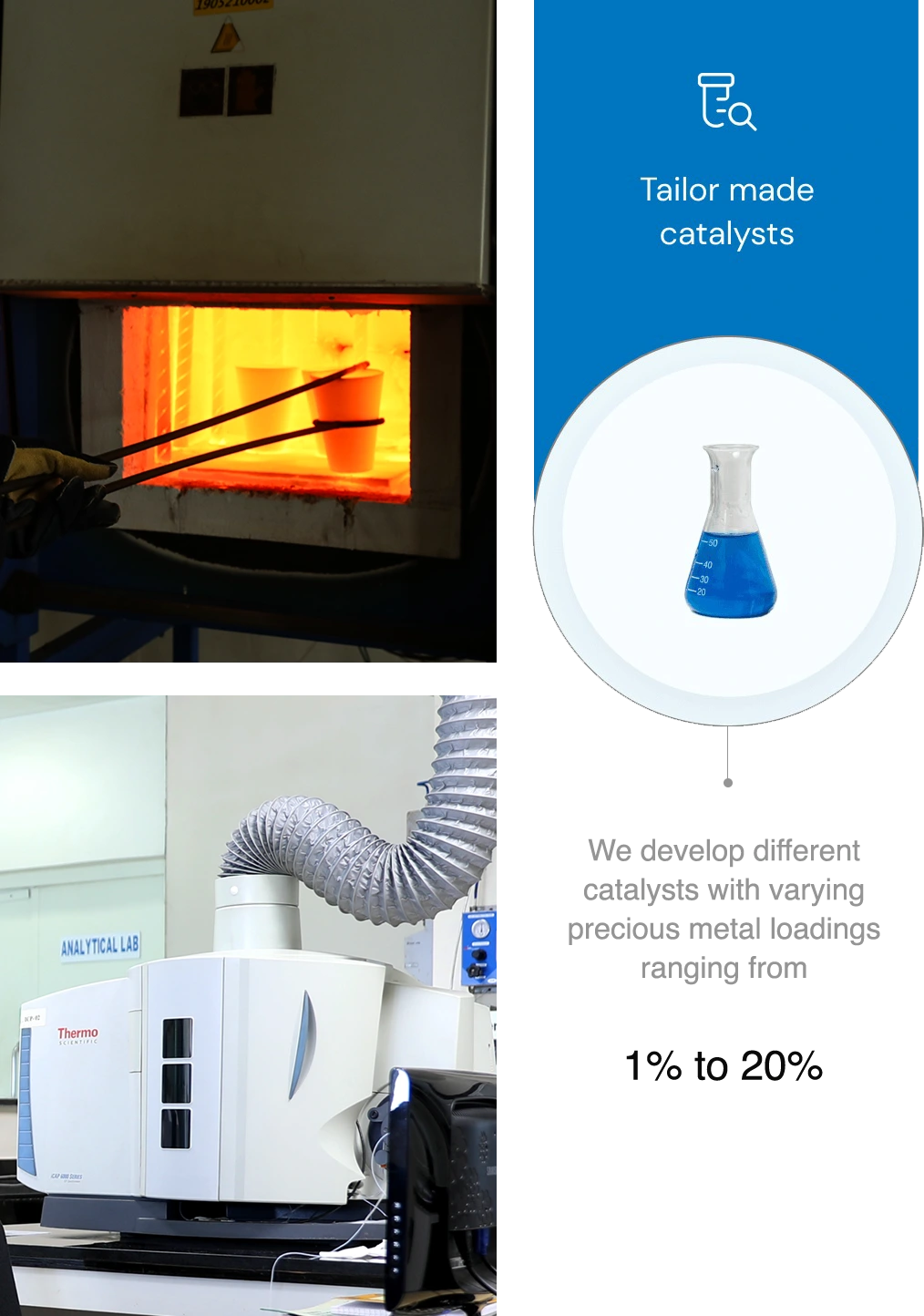
CatalystPro App
Designed to streamline and simplify the catalyst selection process for industry experts, institutes, universities, scientists, and contract research organizations.
CatalystPro empowers you to make informed decisions, reduce response times, and elevate your chemical reactions to new heights of efficiency.

The Hindustan Platinum Advantage

Statutory Compliance
Authorized Economic Operator (AEO) T2 certified business: Ensures streamlined and smooth customs processes

3 Star Export House Status
Priority Assessment and Customs Facilitation at Sea and Airports in India faster turnaround times & a more efficient supply chain with deferred duty payment and bank guarantee scheme

Strategic Logistics Location

India’s major Sea Port Nhava Sheva - 50 Km | Mumbai Airport - 25 Km. Sea Port Indicative one-way transit time* to Nhava Sheva port from major ports in regions
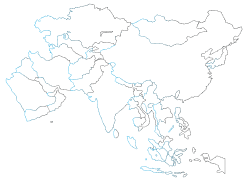
Asia (7-25 days)
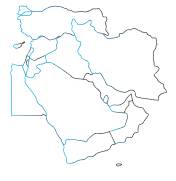
Middle East (3 days)
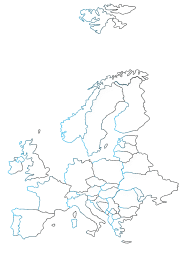
Europe (42-45 days)

US (52 days)
*Indicative sea transit time does not declare our lead time

Sustainability

We Are Committed to the SBTi Net-Zero Standard
and to setting a robust emissions reduction target at
the pace and scale required by climate science

EcoVadis, the world's largest provider of sustainability ratings for companies, rates us among the top 15% with a Silver label

Energy Offsetting Since Past 2 Years' Wind power fulfilled 46% of HPPL energy needs

Striving for 'Zero waste'
We've adopted a zero waste strategy and recycled 99% of process hazardous waste and in-situ 100% utilization of bio-degradable waste

Rainwater Harvesting
We harvest ~20,000 KL of rainwater every year
Socially Responsible
We are committed to contributing to the welfare of society by taking various initiatives related to

Health Care

Women Empowerment

Promoting Our Culture

Disaster Relief

Rural Development

Care for Senior Citizens

Education
Download our Newsletters
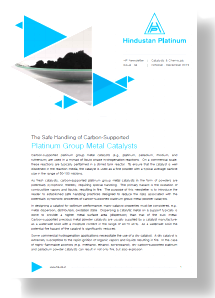
Heterogeneous Catalysis: Structure Sensitivity of Catalytic Reactions
Issue 17, January – March 2023
Lab-Scale Catalyst Testing: Stirred Tank Reactors
Issue 16, October – December 2022
Catalyst Characterization – Particle Properties of PGM Catalysts
Issue 15, July – September 2022
Catalyst Characterization – Surface Properties of Powdered PGM Catalysts
Issue 14, April – June 2022
Catalyst Characterization – Physical Properties of Powdered PGM Catalysts
Issue 13, January – March 2022
Lindlard Catalyst – Description & Applications
Issue 12, October – December 2021
Pearlman’s Catalyst – Description & Applications
Issue 11, July – September 2021
Platinum Group Metal Sulfide Catalysts for Liquid-Phase Hydrogenation
Issue 10, April – June 2021
Carbon-Supported PGM Catalysts for Liquid-Phase Hydrodehalogenation
Issue 09, January – March 2021
Carbon-Supported PGM Catalysts for Liquid-Phase Aromatic Ring Reduction
Issue 08, October – December 2020
Carbon Supported Palladium Catalysts for Liquid-phase Debenzylation
Issue 07, July – September 2020
Deactivation of Carbon-Supported Platinum Group Metal Catalysts
Issue 06, April – June 2020
Effect of Catalyst Synthesis Method on Catalyst Properties and Performance
Issue 05, January - March 2020
The Safe Handling of Carbon-Supported, Platinum Group Metal Catalysts
Issue 04, October - December 2019
The Role of Activated Carbon as a Support for Platinum Group Metal Catalysts
Issue 03, July – September 2019
Catalytic Hydrogenation Over Platinum Group Metals (PGM)
Issue 02, April – June 2019
An Introduction to Heterogeneous Catalysts
Issue 01, January – March 2019



